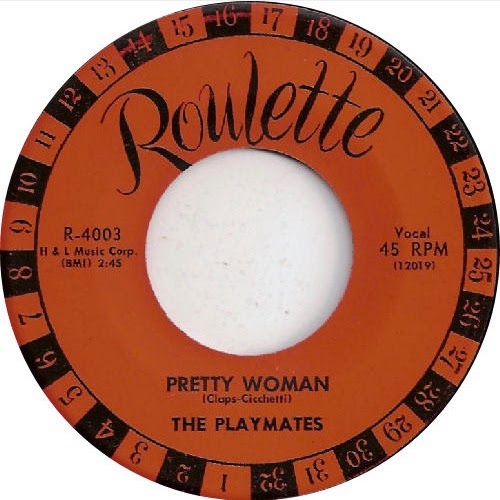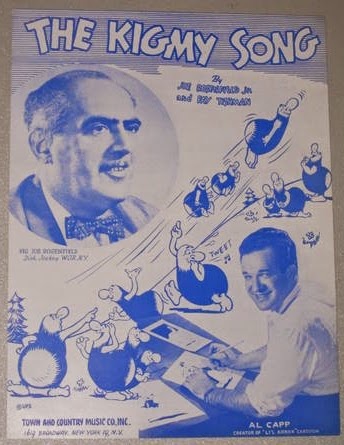One practice that we should all be thankful has died out is the widespread use of fake accents in music. In pop and folk music, in particular, until the mid 1960s, artists routinely affected Italian, Mexican, Russian, Irish, Chinese, and other accents, often on songs that were filled with cultural cliches and unpleasant stereotypes.
You can still hear fake accents from time to time in music. Country artists often exaggerate (or fake) their hick and southern accents. Indiepop and indie rock artists, like Guided By Voices' Robert Pollard, sometimes affect fake British accents. Even Britney Spears utilized a fake British accent in the 2012 hit "Scream & Shout."
Today on Music Weird, we'll stroll down Memory Lane and revisit some of the most atrocious fake accents from the popular music of yesteryear.
Billy Walker – "Viva La Matador"
Country star Billy Walker laid on an awful fake Spanish accent in "Viva La Matador" in 1957. The lyrics (example: "heap big") seem to be a mixture of Spanish-American and Native American stereotypes.
Mamie Van Doren – "Go, Go Calypso"
"Go, Go Calypso" is Mamie Van Doren's contribution to the calypso craze. I don't think that Van Doren ever recorded a song that I would want to hear more than once.
Rod McKuen – "Bimini"
"Bimini" is a song from Rod McKuen's first album, Songs for a Lazy Afternoon, which was released by Liberty Records in 1956. Most of the recordings were later reissued on a 1970 Sunset LP titled In the Beginning, but the most awful songs for a lazy afternoon—including "Bimini"—were left off. When McKuen sings straight, he's an acquired taste. Add a fake accent? Forget about it.
Wanda Jackson – "Don'a Wan'a"
As a rule, country artists shouldn't attempt foreign accents.
Rosemary Clooney – "Sailor Boys Have Talk to Me in English"
I can't tell if this is supposed to be a Mexican or Russian accent.
Peggy Lee "Manana"
The talented Peggy Lee gave it her all with a fake Mexican accent in "Mañana," a song that was a #1 hit in 1948. In his book Latinos: A Biography of a People, author Earl Shorris described Lee's singing as "a cruel parody of a Mejicano accent," and wrote, "To the Mexican-American veterans of World War II who were, at the height of the song's popularity, attempting to move into the middle class, 'Mañana' was an almost physical barrier to be overcome in applying for a job or a business development loan. No stereotype could have been more damaging than the slothful simpleton portrayed by Lee."
The Playmates – "Pretty Woman"
The Playmates' fake calypso tune, "Pretty Woman," is especially bad because the accent is so halfhearted. Come on, guys—either do an accent or don't, but don't give us this weak in-between stuff.
No video, but here's a sample.
Nita, Rita & Ruby – "My Man True to Me"
This country vocal trio, of which a young Anita Carter was a member, couldn't make up their minds whether to do an accent or not on this faux-calypso number from 1957. Their pronunciation of "my man" sounds like "mama," which would give the song an interesting twist if that were the actual lyric.
Red Sovine "Little Rosa"
This one makes me cringe. Years before Red Sovine became the king of trucker recitations ("Teddy Bear," "Phantom 309," etc.), he recorded for Decca Records without great success, apart from singing harmony on Webb Pierce's hit "Why, Baby, Why." "Little Rosa" is another song that Sovine and Pierce recorded together, and it's particularly awful, because it combines Sovine's terrible, annoying fake accent with a maudlin story about a dead girl.
José Jiménez – "The Astronaut"
José Jiménez was actually gringo Bill Dana. "The Astronaut" was a hit in 1960.
T. Texas Tyler – "A Colored Child's Funeral"
T. Texas Tyler really lays it on thick with the black dialect in his version of this old recitation, but no audio of it exists online, so I'm including Pat Boone's version instead. Pat recorded it under the title "Steal Away" and is more subtle with his dialect, but it's still there. Even for 1956, this recording seems to be in pretty poor taste with its references to "grotesque" negro countenances, etc. The dialect part of the recitation begins at 1:49. If you want to hear Tyler's yet-more offensive version, you'll have to track down the CD Unadulturated Country Songs on Germany's Cattle Records.
"Loco Man" from A Mighty Wind
The fad for awful fake accents in '60s folk music was parodied in the Christopher Guest film A Mighty Wind.







